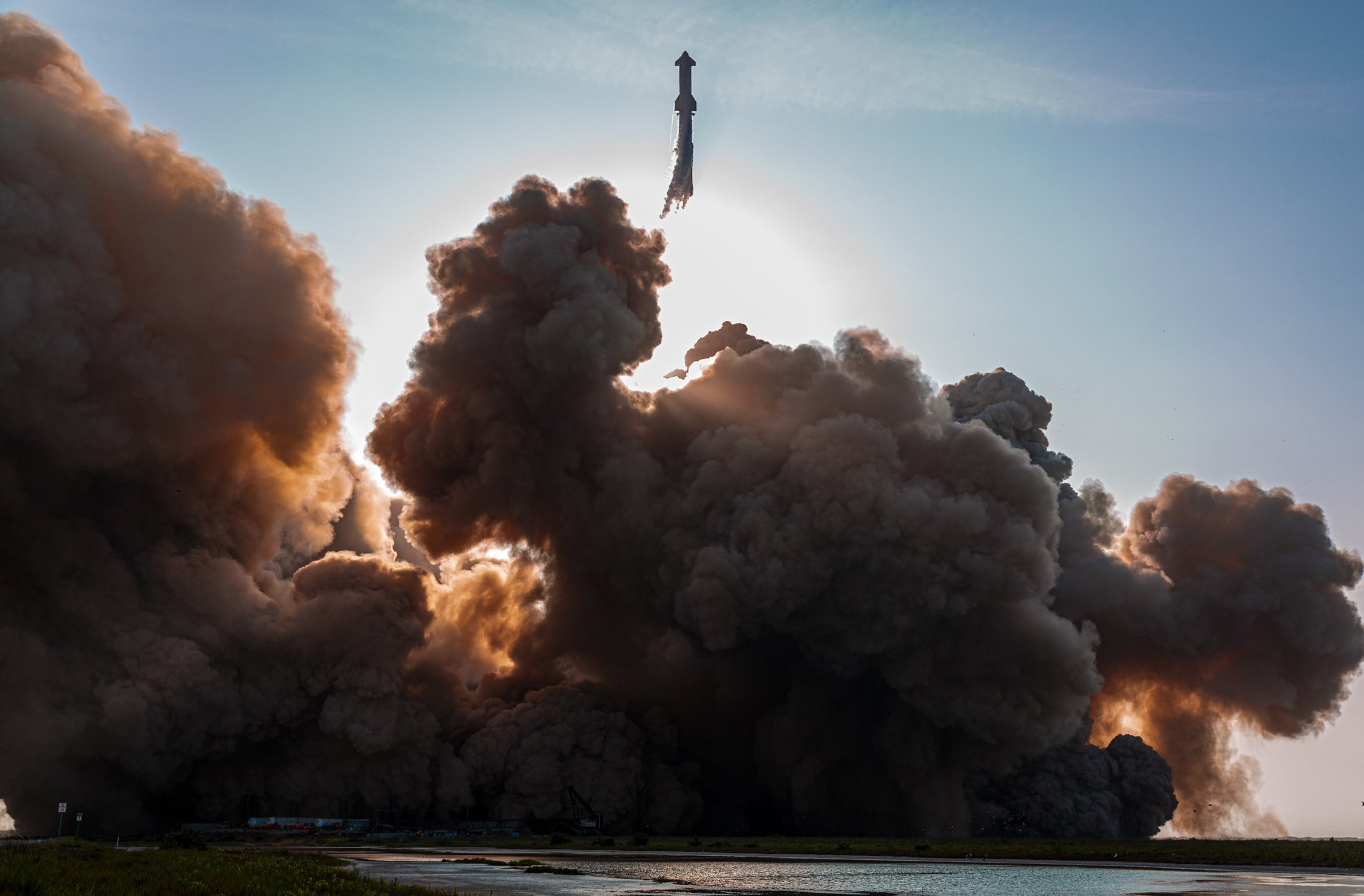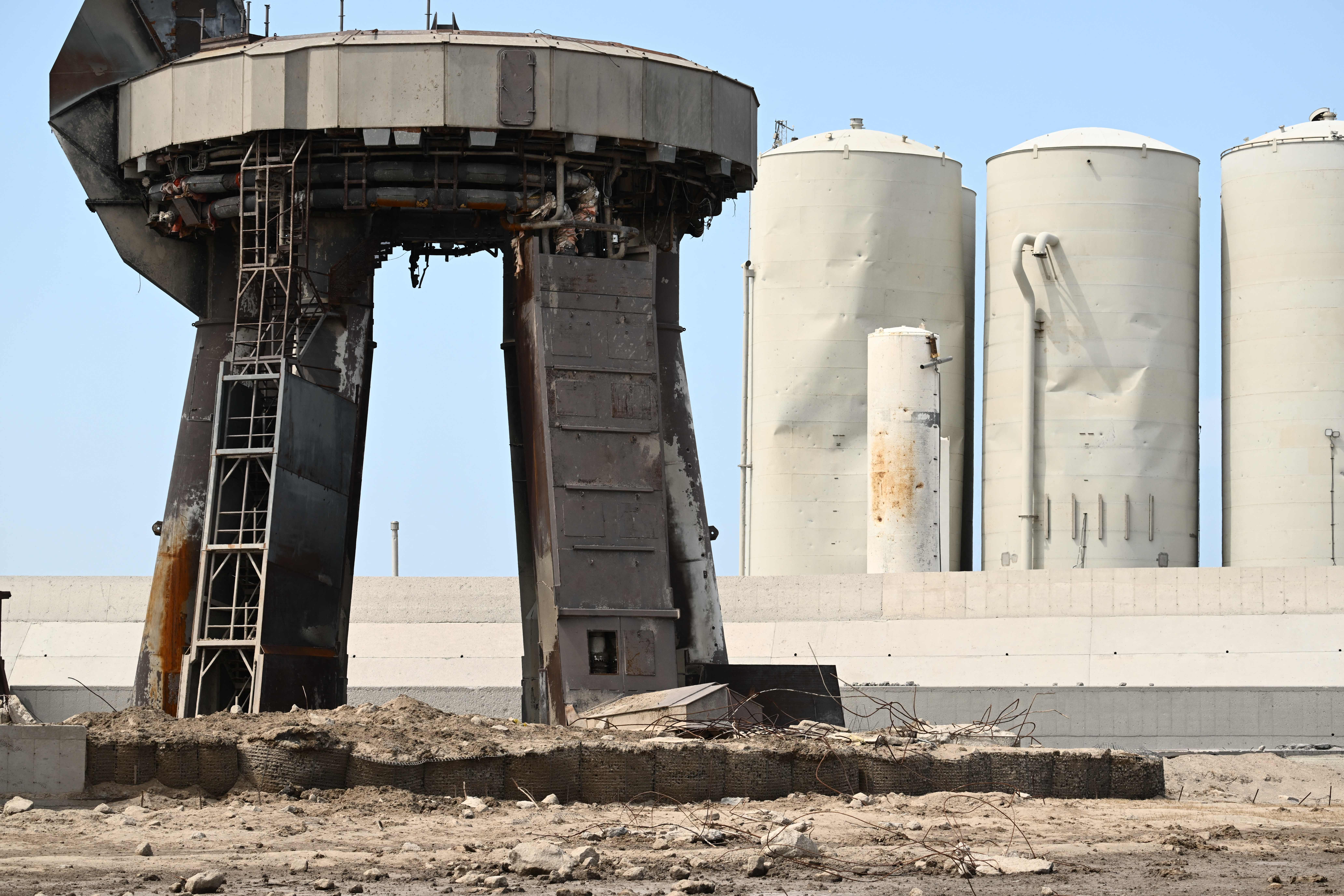
SpaceX's Starship has been grounded by the U.S. government following claims that the rocket's explosive first launch spread plumes of potentially hazardous debris over homes and the habitats of endangered animals.
The Federal Aviation Administration (FAA) — the U.S. civil aviation regulator — has stopped SpaceX from conducting any further launches until it has concluded a "mishap investigation" into Starship's April 20 test launch. The massive rocket’s dramatic flight began by punching a crater into the concrete beneath the launchpad and ended when the giant rocket exploded in mid-air around 4 minutes later.
"The FAA will oversee the mishap investigation of the Starship/Super Heavy test mission," FAA officials wrote in a statement on April 20. "A return to flight of the Starship/Super Heavy vehicle is based on the FAA determining that any system, process, or procedure related to the mishap does not affect public safety. This is standard practice for all mishap investigations."
Dust and debris from the test reportedly rained down on residents in Port Isabel, Texas — a town roughly 6 miles (10 kilometers) from the launchpad — and across Boca Chica's beaches, which are nesting grounds for endangered animals, including birds and sea turtles.
Related: Geomagnetic storm sends 40 SpaceX satellites plummeting to Earth

Dave Cortez, a chapter director for the Sierra Club environmental advocacy group, said that Port Isabel residents reported broken windows in their businesses and ash-like particles covering their homes and schools.
SpaceX's launchpad was also left with extensive damage that includes charred, twisted metal and shattered concrete. The force from the rocket's engines blew a hole in the launchpad and created a crater beneath it. "Concrete shot out into the ocean," Cortez told CNBC, creating shrapnel that "risked hitting the fuel storage tanks which are these silos adjacent to the launch pad."

Unlike other launch sites for large rockets, SpaceX’s Boca Chica site lacks both a deluge system, which floods pads with shockwave-suppressing water or foam, and a flame trench to safely channel burning exhaust away.
"Aspiring to have no flame diverter in Boca, but this could turn out to be a mistake," SpaceX founder Elon Musk wrote in an October 2020 tweet.
The FAA's mishap investigation is standard practice when rockets go astray. The FAA’s investigation will need to conclude that Starship does not affect public safety before it can launch again. As debris spread far further than anticipated, the FAA's "anomaly response plan" has also come into force, meaning SpaceX must complete extra "environmental mitigations" before reapplying for its launch license.
Musk wrote on Twitter that SpaceX began work on "a massive water-cooled, steel plate to go under the launch mount" three months prior to the launch, but it wasn't ready in time.
"Looks like we can be ready to launch again in 1 to 2 months," he added.
Standing at 394 feet (120 meters) tall and propelled by a record-breaking 16.5 million pounds (7.5 million kilograms) of thrust, SpaceX's Starship is the largest and most powerful rocket ever built. Able to carry 10 times the payload of SpaceX's current Falcon 9 rockets, Starship was designed to transport crew members, spacecraft, satellites and cargo to locations in the solar system.
After blasting off from its launchpad at Boca Chica, Starship climbed to a maximum altitude of 24 miles (39 km) before problems with as many as eight of the rocket's 33 Raptor 2 engines caused Starship to flip and roll, leading SpaceX to order the rocket to self-destruct.
Despite the rocket's unexpectedly messy takeoff and fiery demise, SpaceX and Musk have hailed the test as a success that enabled engineers to gather essential data for the next launch. On April 16, four days before the test, Musk lowered expectations, warning in a Twitter discussion that if any of the rocket's engines went wrong "it's like having a box of grenades, really big grenades."
"This is really kind of the sort of first step in a very long journey that will require many, many flights," Musk said. "For those that have followed the history of Falcon 9, and Falcon 1 actually, and our attempts at reusability, I think it might have been close to 20 attempts before we actually recovered a stage. And then it took many more flights before we had reusability that was meaningful, where we didn't have to rebuild the whole rocket."
This story was provided by Live Science.







